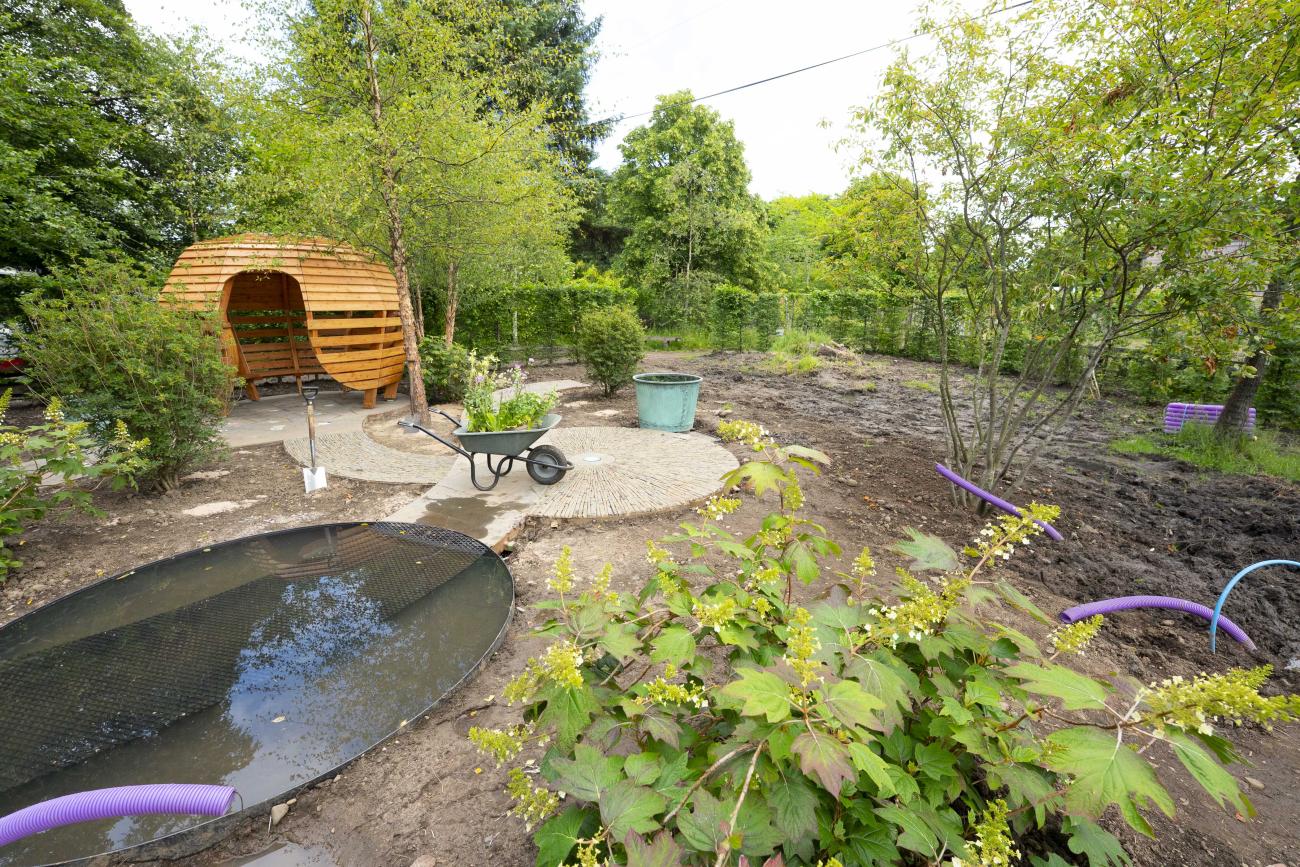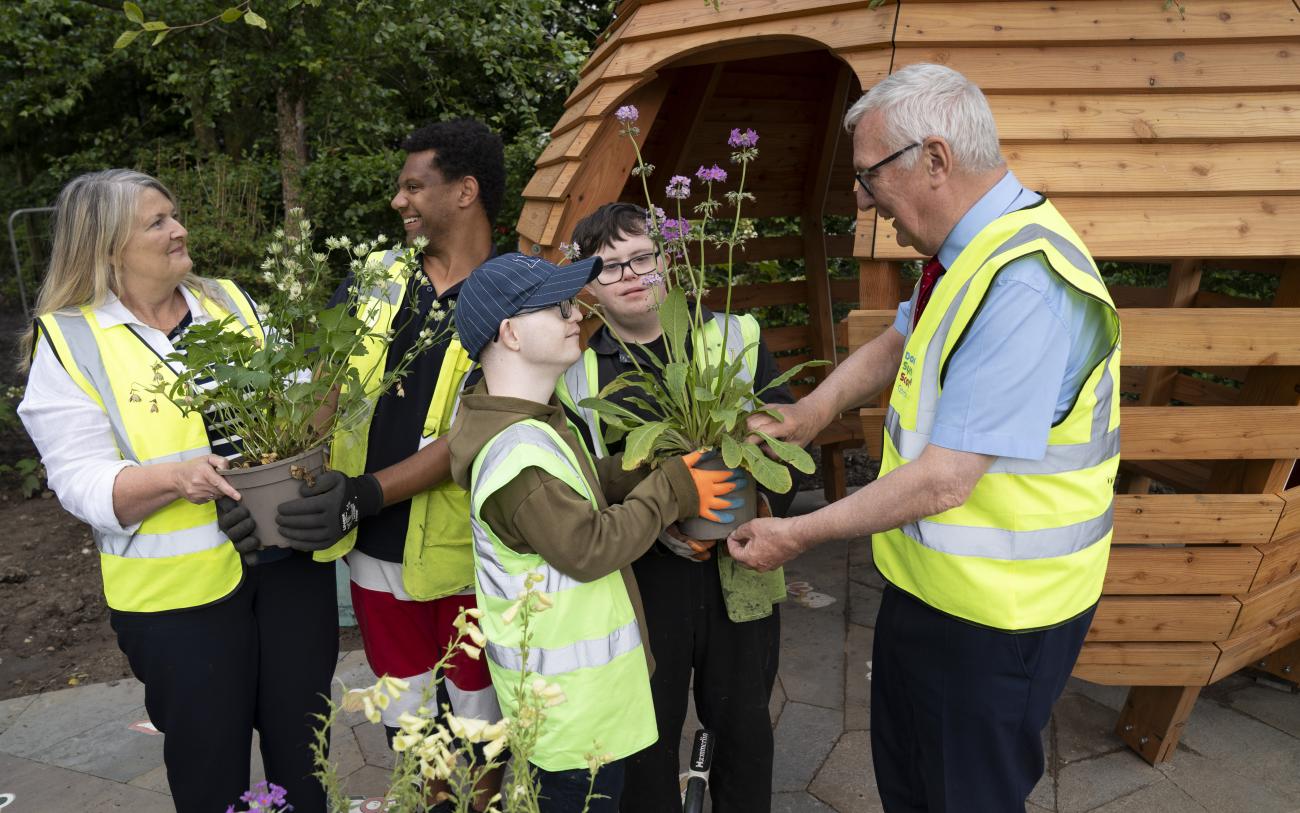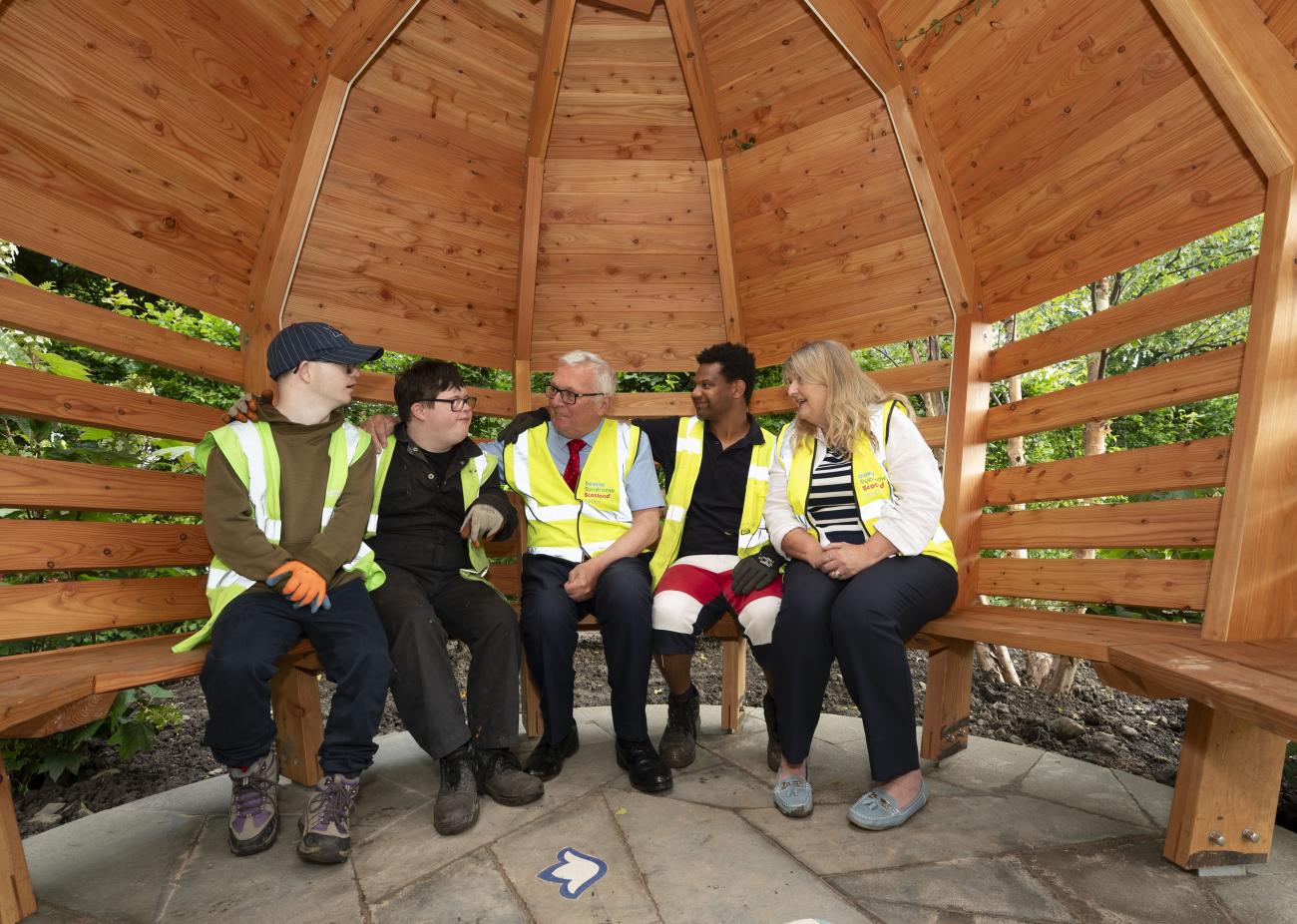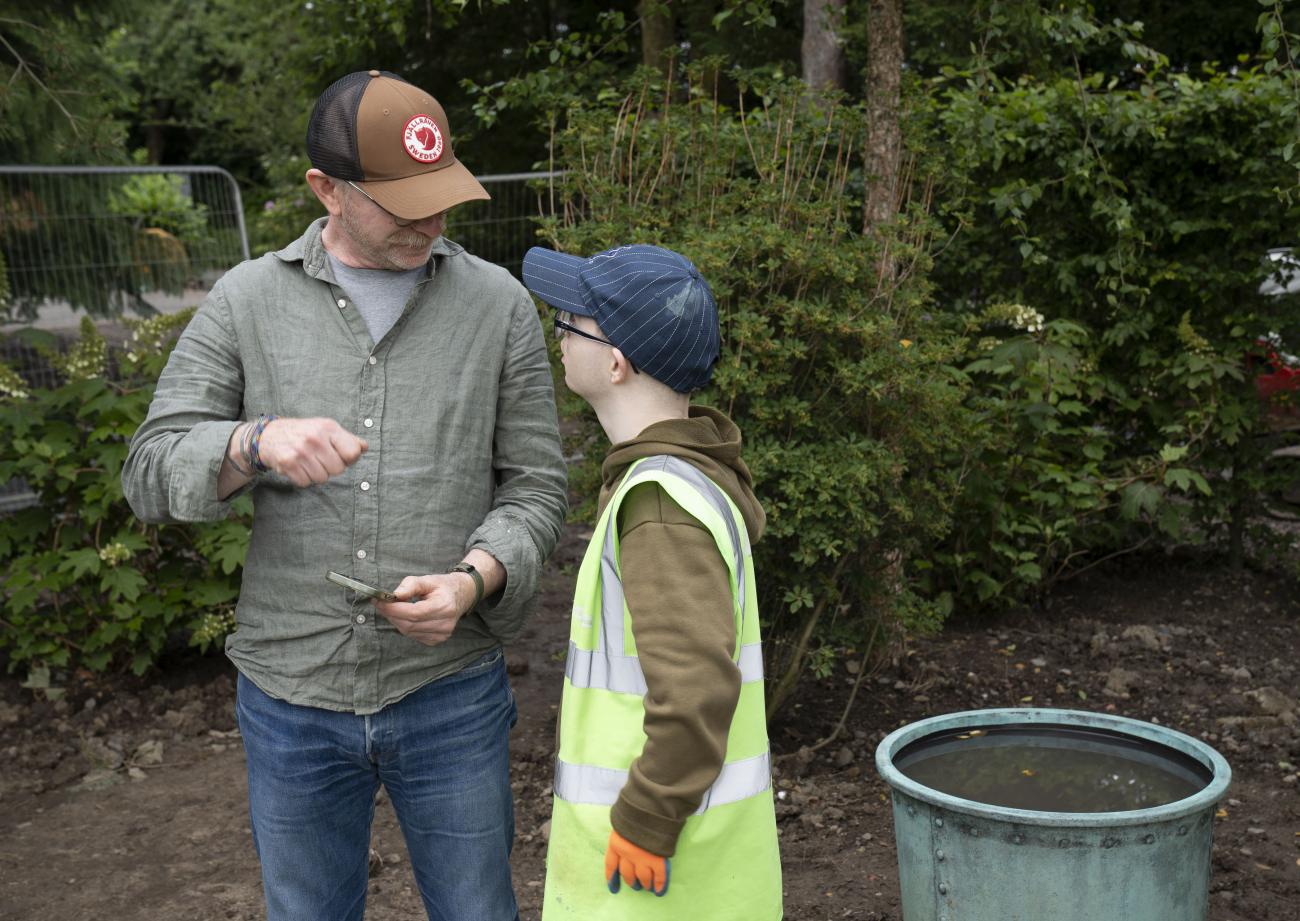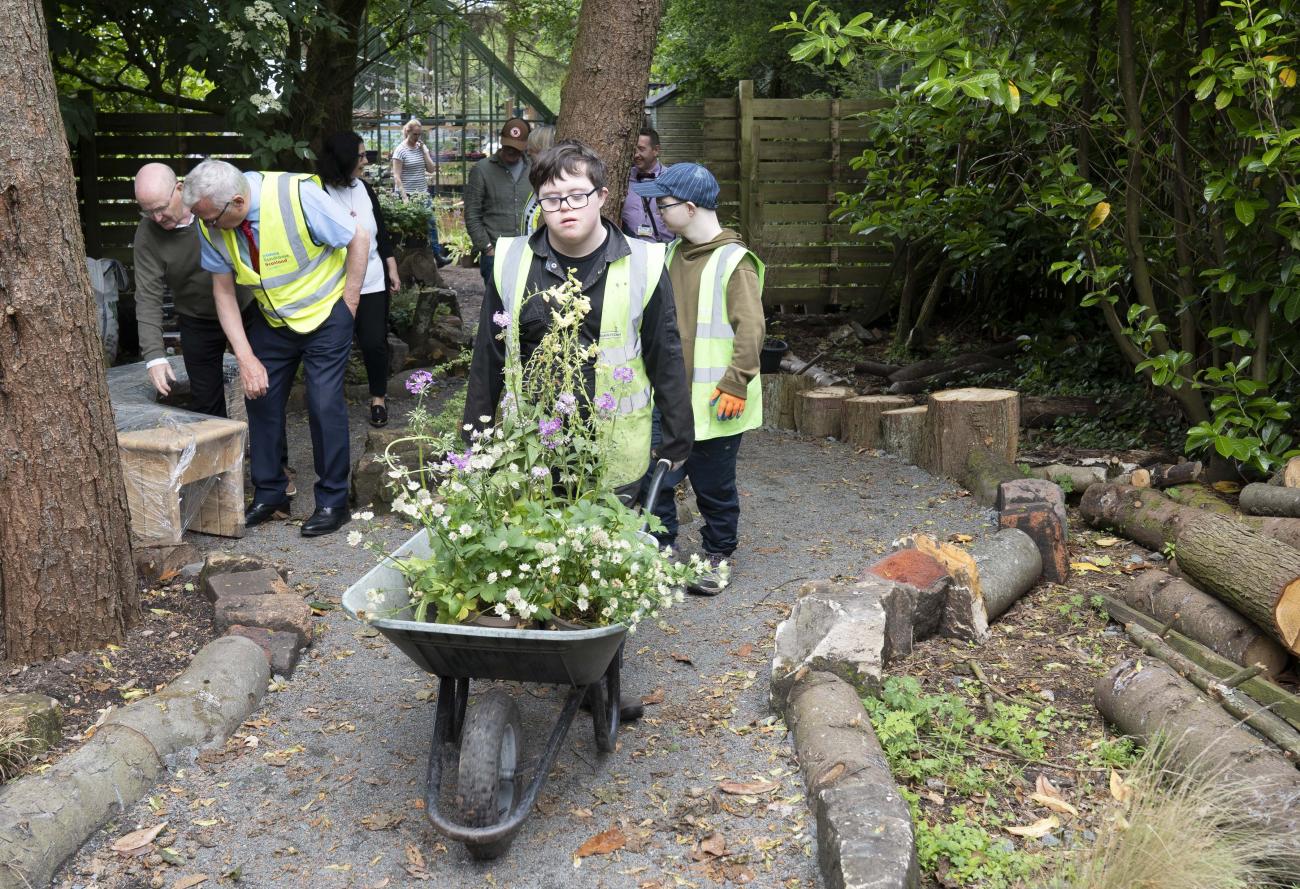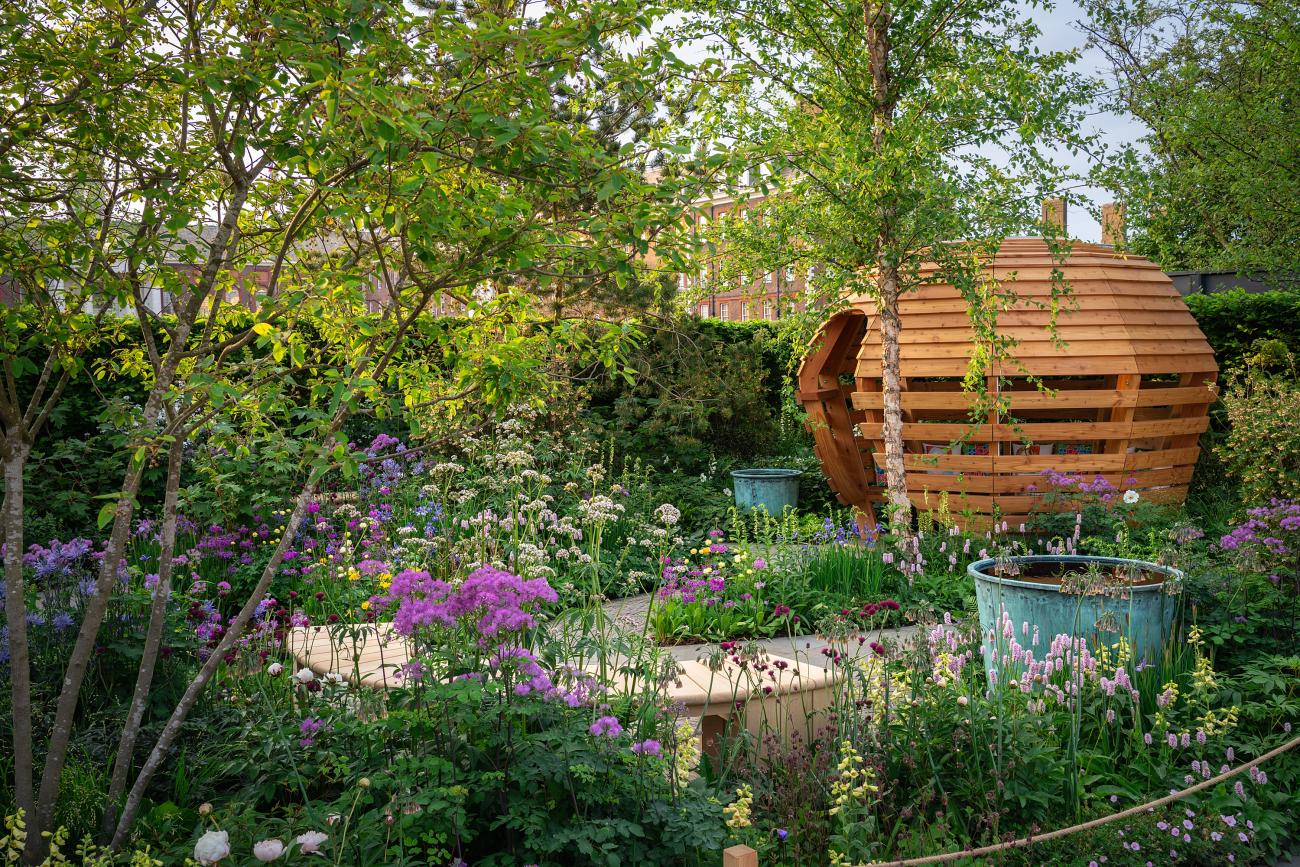The Down’s Syndrome Scotland Garden, designed by Nick Burton and Duncan Hall of Burton Hall Garden Design, will take visitors on a journey through the life of someone with Down’s syndrome.
It highlights their many unique qualities while also challenging visitors to appreciate and understand the barriers that people with Down’s syndrome still face as they strive to live their best lives.
The garden was inspired by Duncan’s seven-year-old nephew, Liam, who has Down’s syndrome and is supported by Down’s Syndrome Scotland.
It was first created at the RHS Chelsea Flower Show in May, where it was enjoyed by thousands of visitors and won a Silver Gilt medal for small show garden and the People’s Choice for Best Small Show Garden.
When Chelsea finished, the garden was carefully moved to Palacerigg where it will become a permanent feature at Watch US Grow, a charity supporting young adults with Additional Support Needs with gardening and life skills.
This move has been made possible by Project Giving Back, a unique grant-making charity that supports cause-driven gardens at RHS Chelsea, ensuring their legacy continues by relocating them to community sites across the UK.
Nick and Duncan are working with Watch Us Grow, volunteers and the council to recreate the garden which will open to the public in May 2026.
Consisting of around 2,500 plants, the garden has a number of specimen trees, including a large Scots Pine. It also has a number of structural features including water pools, bespoke benches and artisan ceramic tiles.
A meandering path leads visitors through two distinct planting areas that convey contrasting moods: one of calmness and the other of playfulness.
A water pool that initially appears to be a barrier to progress symbolises the daily challenges faced by people with Down’s syndrome who - despite huge progress in recent years - still experience stigma, often resulting in reduced opportunities and life expectancy.
The path leads visitors to a welcoming shelter designed to look and feel like a warm and comforting ‘hug’ that so many from the Down’s syndrome community give others through their incredible qualities such as empathy, sensitivity and compassion.
